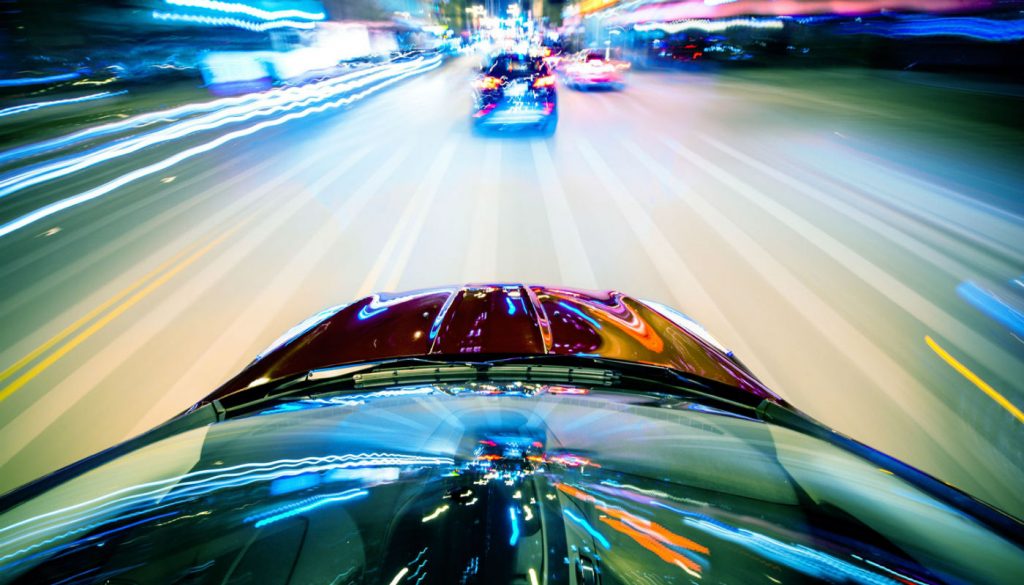Autonomous vehicles are expected to have a disruptive effect on travel, but could end up creating gridlock.
More than 70 per cent of domestic passenger movements within Australia occur on roads. And distance travelled is forecast to grow at 1.7 per cent per year up until 2020.
Importantly, the Australian Government studies behind these statistics have shown that the distance people travel is highly correlated with both fuel prices and economic conditionals – that is, traffic is highly sensitive to affordability.
What we are just starting to realise is just how dramatically autonomous vehicles will lower the cost of private road transport, increasing its affordability.
How will autonomous vehicles change the cost of transport?
What do you get when you ‘Uberise’ an autonomous vehicle? While you work, eat, drink, sleep and holiday, your vehicle earns you a passive income by working as a driverless taxi.
Research firm ARK Invest forecasts autonomous shared fleet fares at one-tenth of current taxis. This suggests that the early autonomous vehicles charging taxi fares will not just pay for themselves; they will be hugely profitable. But as companies buy as many of these vehicles as they can and put them on the road as ‘shared fleets’, the competition will quickly drive prices down to profit margins closer to alternative investments.
My prediction is that ‘middle Australia’ will not own a car. It will not make economic sense nor be convenient. Car ownership will be reserved for car enthusiasts and businesses with tools or equipment like tradespeople.
Why will low-cost autonomous vehicles increase traffic?
Economic theory prescribes that if the cost of transport decreases, demand will increase. We have already established a dramatic drop in transport costs and that road traffic is highly sensitive to affordability.
The increase in traffic growth will come from people taking trips they would otherwise not have taken – as well as people choosing private autonomous vehicle transport over other modes such as buses or taxis.
If you can work while being driven, you might not worry about how long your commute is.The latter involves people who would otherwise travel, but by other modes such as: public transport, hire car, bicycle or by foot. These people are seeking greater convenience or value from private transport. Think about how far you can travel for the equivalent of a $40 taxi fare.
Will the average person walk then wait for a $4 bus or train for that journey when for the same cost they can be chauffeured? Even when comparing a traditional car trip from home garage to city car park with a person at the controls, autonomous cars will be driving before and after people are physically in the car (also adding to traffic). And while congestion might be somewhat self-correcting, because autonomous transport allows passengers to either work or relax during the trip, the time-cost of transport is reduced. People will travel for longer if they have already effectively ‘clocked-on’.
There has been a lot of attention given to the traffic efficiencies that autonomous vehicles will provide: driving closer together, crashing less and better anticipating when to deviate from clogged arterial roads to slower speed local roads with less traffic. Will these efficiencies keep pace with increased journey demand while being hampered by human drivers reluctant to hand over the controls?
This redistribution of vehicles from arterial roads to local roads, often referred to as ‘rat running’, has a positive effect on arterial roads, reducing their congestion and increasing traffic speed. However, this effect is dampened because local roads are often isolated networks in themselves, requiring traffic to rejoin arterial roads at pinch-points between suburbs, such as bridges over rivers or railways.
What will low-cost autonomous vehicles and high traffic mean for cities?
While spaces reserved for stationary vehicles such as city car parks, street parking, home garages will become redundant, there will be an increase in demand for commuter ‘kiss-and-ride’ kerbside lanes, refuelling stations and short-term parks where vehicles may pause while waiting for their next ride.
A lower time-cost of travel increases the distance commuters will be willing to travel, redistributing high city real estate values further afield. Trains may return to favour for those in a rush as they bypass congestion. During off-peak times, when low demand makes it uneconomical to operate, autonomous cars may utilise low-cost rural car parks.
What will relieve the traffic?
Based on history, government will attempt to meet traffic demands by building new and wider roads, tunnels and bridges. However, the high congestion cost will promote public and private investment in new technologies that overcome the issue.
The congestion we have described is a two-dimensional gridlock. We only need to go ‘up’ a few metres and we have an almost unhindered transport grid. In a three-dimensional network you can eliminate intersections by running all east-west traffic at 10 metres and north-south traffic at 20 metres. Reserve higher layers for longer commutes at greater speed.
If you are afraid of heights, be relieved that a three-dimensional transport network will be short lived before artificial intelligence renders it (and us) obsolete.
